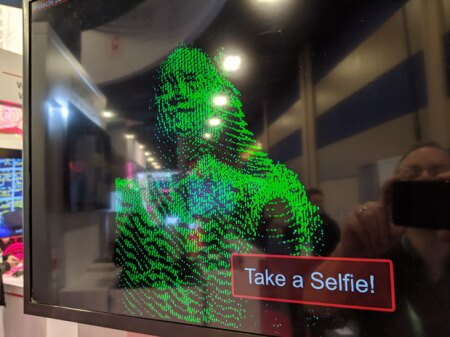Components of tomorrow’s smart cities are already coming to market.
At the CES—the convention formerly known as the Consumer Electronics Show—much of the vast exhibit space is no longer occupied by computers, phones, or other products made for home or office use. At the 2020 CES, held earlier this year in Las Vegas, much of the attention was on municipal-level technologies such as partially or fully autonomous vehicles, delivery drones, street-based sensors, and other components of tomorrow’s smart cities.
A smart city needs not just a brain, but eyes and ears as well. Exhibitors had plenty of solutions on display for collecting the data needed to optimize parking, traffic flows, and other aspects of urban life.
For example, a sleek utility pole called the Ekin Spotter—made by Ekin, an international software, hardware, and design firm that focuses on smart cities—can accommodate such modules as a license-plate reader, traffic radar, red-light cameras, and air quality sensors, along with electric-vehicle charging ports. Think of it as a Lego kit for smart-city monitoring. One CES attendee and exhibitor endorsed that kind of efficient integration of functions.
Raimundo Rodulfo, chief innovation officer for Coral Gables, Florida, represented one of the few cities to exhibit at CES. “I was impressed by new smart-city technologies that consolidate multiple technologies in one and reduce footprint, form factor, and complexity,” he said.
Privacy is a concern whenever one talks about license-plate readers and cameras, but tracking conducted for traffic reduction does not have to involve identifying individual people. Some systems on display at CES offered a way forward in light of those privacy concerns.
At Hitachi’s exhibit, monitors showed how light detection and ranging (LIDAR) sensors provide a greenish, bitmapped view of surroundings, with individuals reduced to nonrecognizable bipedal blobs. One setup invited passersby to stand in front of a LIDAR sensor to take a LIDAR selfie.
In the bargain, the low-resolution output of LIDAR—just 320 by 480 pixels in the Hitachi demonstration—requires minimal bandwidth to transmit compared with regular video. These sensors are also getting cheaper—Hitachi cited prices from $1,000 to $2,000—as output rises to meet a growing demand for their use in autonomous vehicles.
Michael Lee Sherwood, director of the Las Vegas Department of Information Technologies, endorsed using LIDAR as a privacy-preserving tool to monitor street activity.
“What we’re doing with traffic and safety, it’s not necessarily needed to know a person’s identity,” he said. “Our job is to install trust in the community. We’re doing that through using technology to help us, not invading someone’s personal place.”
Rodulfo said that while Coral Gables uses LIDAR to inventory such right-of-way hardware as street signs and pavement, it also uses video cameras. But the city does not store the results as anything but numeric totals—which anyone can inspect on the city’s data hub.
“We don’t perform face recognition and we don’t keep any database of individual faces with our IOT [internet of things] sensors or CCTV [closed-circuit television] cameras,” he said. “Our traffic sensors perform anonymous counts of pedestrians and vehicles, which are stored and displayed as anonymous count statistics without any personal information on the smart-city hub public platform.”
These are issues that cities may not have thought about much before, but they will need to as smart-city technologies become more commonplace.
“So much of how we do planning is just extrapolating from what we do today,” said Lisa Nisenson, vice president for new mobility and connected communities at the West Palm Beach, Florida, design firm WGI. “But with so much disruption, you can’t just do what you do today.”


